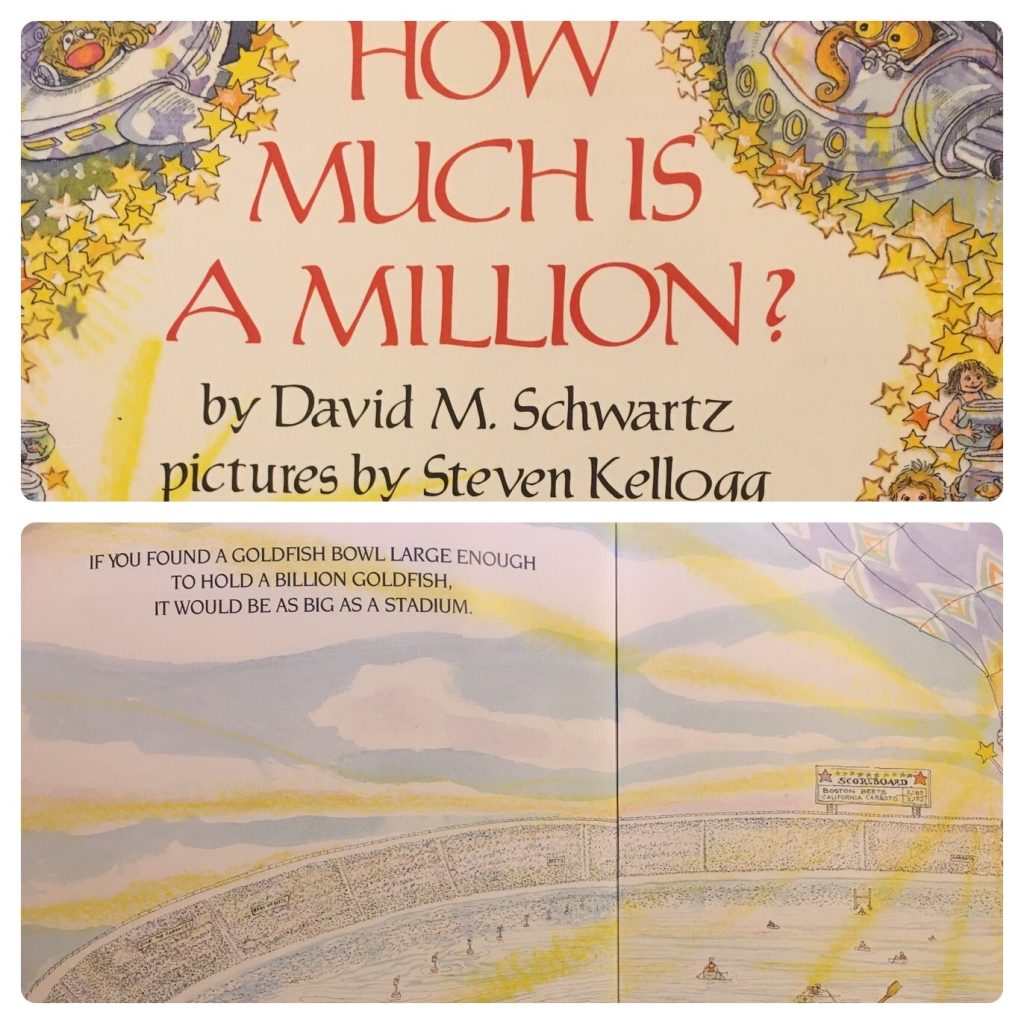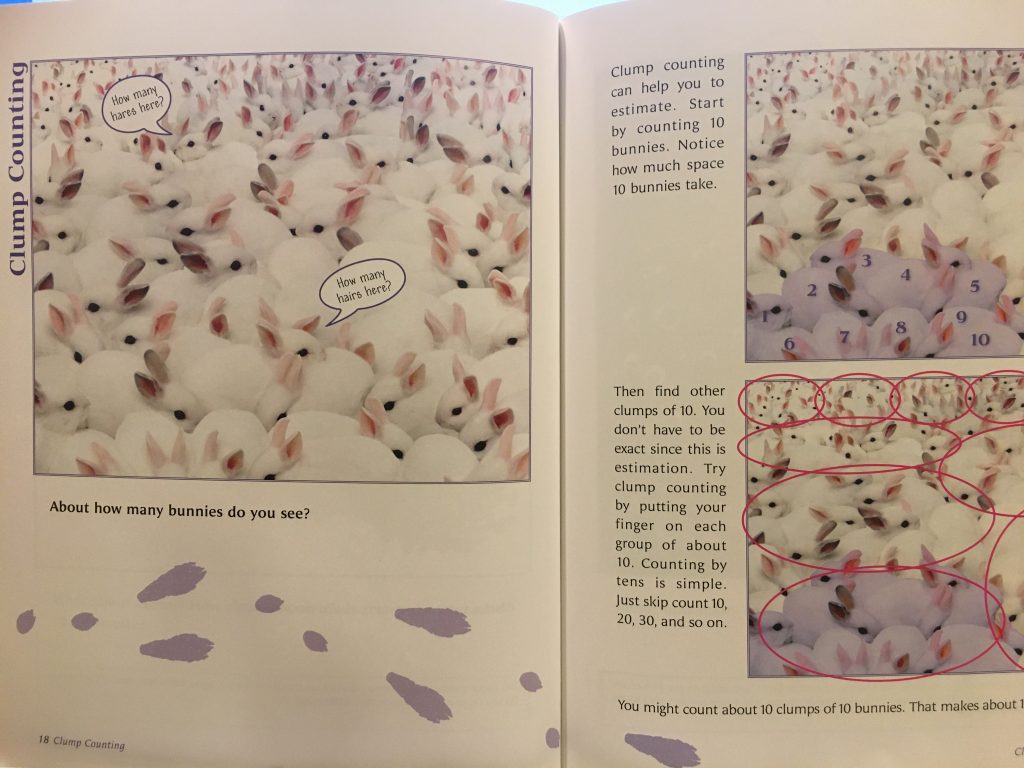This week my blog is inspired by a lovely Twitter post by @johnqgoh (principal at Merrylands East PS) and the discussion that followed regarding mathematics-focused picture books. John shared images from a book called A Million Dots by Sven Völker. A beautifully illustrated picture book that explores the growing pattern of doubling. Michelle Tregoning (@TregoningMich) also commented that it was currently one her favourites, which means it’s great! Peter Gould (@gould_peter) replied with another book about exploring large numbers called How many jellybeans? A giant book of giant numbers By Andrea Menotti and illustrated by Yancey Labat.
@misterwootube @gould_peter @kath_cartwright @TregoningMich one of my favourite picture books. pic.twitter.com/6n7w6ixzgs
— johnqgoh (@johnqgoh) May 31, 2020
Books that focus on the visual representation of numbers, and in particular large numbers, are an essential resource for primary classrooms. Students aren’t exposed to large numbers within the curriculum until year 5 or 6 (place value with numbers of any size). However, many young students find large numbers fascinating often wanting to count to the largest number possible, trying to say the biggest number they can, or asking parents or teachers to add huge numbers together in their head. I’ve experienced all of these curiosities with my own children, whether it’s the debate about what’s bigger than infinity, or arguments around whether ‘one thousand, thousand’ is a number – young children love big numbers.
A focus on big numbers is not just about students’ interests either. Pedagogically, students need exposure to large numbers to see the necessity for efficient counting or grouping strategies, or to visualise the row or array structure of numbers that make operating with them easier, or in understanding ‘how much bigger’ 1000 is than 10 (e.g. in length, area, volume, time). So, introducing students to big numbers early in primary school can be beneficial. Even when they are just learning to count to 10, or 100, seeing what big numbers look like teaches students a number of skills such as; estimation, proportional thinking, comparison.
There are lots of picture books that deal with big numbers, I’ve included a few here that I’ve used in the past that would make for great additions to classroom libraries or homes. A number of them also lend themselves to being used to launch lessons, building the skills mentioned above – particularly visualising, comparing, grouping, and estimating. Students might enjoy re-creating their own versions of selected pages from these books or by making large numbers themselves with physical items that could them be photographed and published into a book of their own.
Still Iove this one too! pic.twitter.com/gtO3qurmNZ
— katherin cartwright (@kath_cartwright) May 31, 2020
365 Penguins by Jean-Luc Fromental and Joëlle Jolivet was one of the first picture books focusing on numbers and growing patterns that was shared with me. The NSW Department of Education even has some learning objects for the Count Me In Too project inspired by the penguins! Some ideas of how to use this book in mathematics lessons can be found here. It’s a great story with plenty of mathematical investigations along the way. The images used show penguins in lines, in rows, in ‘clumps’ and covering the whole page during the story, these different representational models of numbers allow the reader to find new and different ways to count the penguins.
A classic picture book that deals with big numbers is How much is a million? By David M Schwartz, pictures by Steven Kellogg. This book has been around for a while and makes some excellent comparisons to assist students in understanding the scale of one million. They present real-life scenarios that compare large numbers to experiences students may be familiar with such as; a goldfish bowl that holds one billion fish would need to be as big as a stadium. I have the 20th anniversary issue, there are lesson notes in the back of the book and the inside cover of the book also provides a range of ways to use the book in the classroom based on feedback the author received from schools that were using his book. Questions like: How far would a million go? and Let’s spend a million? are described as lesson activities.
Another good book is Great Estimations by Bruce Goldstone. It reminds me of a ‘big numbers’ version of How many? by Christopher Danielson (@Trianglemancsd). Great Estimations focuses on building estimation skills – moving from guessing, to more sophisticated ways to obtain an accurate estimation. Progressing from what does ten look like? to what does 100 look like? through to larger numbers. It teaches techniques such as; eye training, clump counting, and box and count. In the classroom, it would be good to have these images large on the wall or on an interactive whiteboard so students could come out to the board and share their techniques for estimating and counting the items.
Other picture books on big numbers that I own include Can you count to a googol? By Robert E Wells and Millions, Billions, and Trillions: Understanding big numbers by David A Adler, illustrated by Edward Miller. As I mentioned, these are just a few that should be in your collection. The department has a good booklist linked to the NSW Premier’s Reading Challenge that include numbers and counting. They also have a past issue of SCAN about Picture books: Engaging students in numeracy that is also valuable. I hope this blog inspires you start introducing your students or children to big numbers through picture books!







